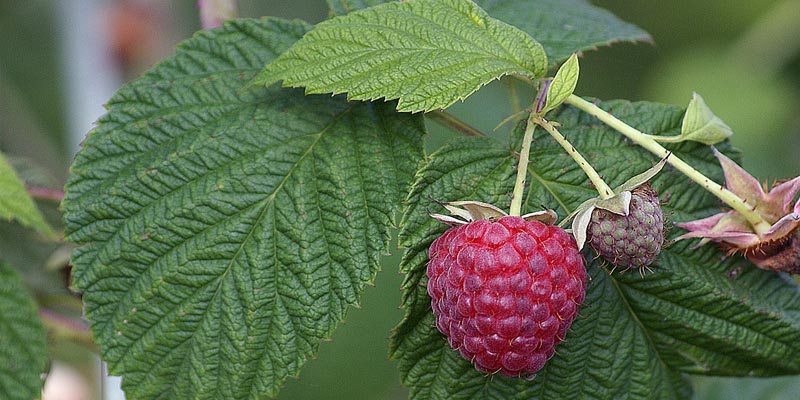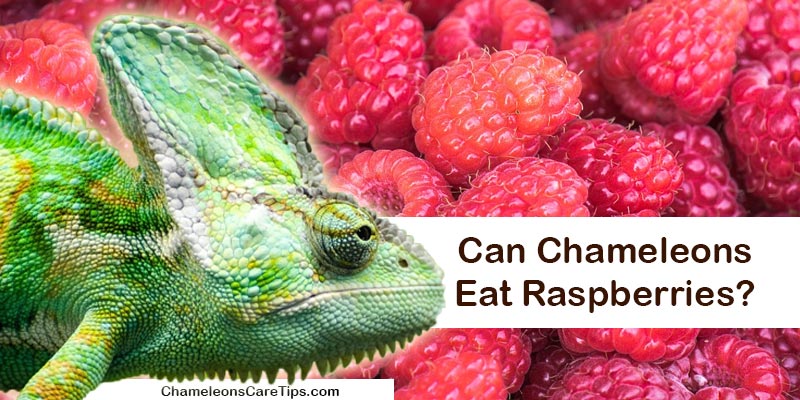One of the most popular fruits around, raspberries charm with their delightful flavor and boast numerous health benefits. Their versatility is remarkable: consume them fresh or incorporate them into recipes for a myriad of dishes – from refreshing smoothies to indulgent ice cream creations. Do you ever question the suitability of feeding your chameleon raspberries?
Table of Contents
Can Chameleons Eat Raspberries?
Primarily insectivores, chameleons consume a diet dominated by insects: crickets, mealworms, and other small invertebrates. Although they may occasionally indulge in fruits—such as raspberries—it is crucial to note that such consumption does not constitute an inherent or vital aspect of their natural sustenance.
Should you opt to treat your chameleon with occasional raspberries, ensure a moderate amount is provided. Offer only small, bite-sized pieces; guarantee the freshness and absence of pesticides in these berries.
Feeding Chameleons Raspberries: Are There Any Risks Involved?
Chameleons relish the health benefits of raspberries, yet you must exercise caution and only offer this treat in moderation to your pet. The high sugar content of raspberries, if consumed excessively by chameleons, could precipitate problems.
Furthermore, refrain from feeding a chameleon with bacterial or fungal infection and raspberries.
Benefits Of Feeding Raspberries To Chameleons
Raspberries house a wealth of essential nutrients–vitamin C, vitamin K, manganese, dietary fiber, and copper. Chameleons require these elements for their healthy development and growth; specifically—Vitamin C aids in the production of collagen—the connective tissue creator within body systems.
In addition to its role in calcium redistribution towards bones and teeth, Vitamin K also plays a crucial part in wound healing and blood clotting.
Similarly, manganese facilitates cell development while aiding hormone production for reproductive functions; moreover, this nutrient significantly contributes to bone health.
When attempting to reduce meat intake – a common source of surplus fat – regulating digestion becomes particularly crucial: This is where dietary fiber proves essential. Copper, engaged in numerous enzyme systems that foster the development of robust tissues across your body, concurrently enhances eye health.
Do Baby Chameleons Have the Ability To Consume Raspberries?
A good source of calcium, fiber, and vitamin C is raspberry; raspberries also provide an ample supply of vitamin A. Growing chameleons–particularly the babies–necessitate all these nutrients for their development.

Do Raspberry Leaves Serve as a Diet for Chameleons?
Chameleons indeed possess the ability to consume raspberry leaves. These foliage options, being both safe and nutritious for chameleons, offer a rich source of vitamins, minerals, and fiber that potentially enhance your chameleon’s health benefits.
Ensure you select fresh, pesticide-free raspberry leaves for your chameleon’s diet. Thoroughly wash these leaves to eliminate all dirt and contaminants. Offer the clean foliage directly to your pet by either placing it in their enclosure or hand-feeding them; they will appreciate this gesture of care.
Bear in mind, however, that you should only provide raspberry leaves as a component of your chameleon’s diverse diet; they should not serve as its exclusive source of nutrition. Live insects constitute the primary food source for chameleons, which are then supplemented with suitable plant matter.
How to Feed Raspberries To Chameleons
Consider the small size and delicate nature of chameleons before you feed them raspberries. Here are a few methods to consider:
Hand-Feeding: To hand-feed your chameleon, employ this method of offering small raspberry pieces directly. Hold the raspberry piece tenderly in front of your chameleon’s mouth; it will grasp and consume it at its own pace. Engaging in this method fosters an interactive feeding experience, potentially cultivating trust between you and your chameleon.
Place In The Cage: place small pieces of raspberry directly in your chameleon’s enclosure; ensure accessibility and consumability by the chameleon. The raspberry should be within easy reach for it to access and eat. This method facilitates your chameleon’s natural foraging behavior–provides them with the leisurely opportunity to eat raspberries.
Blending into Smoothies: If raspberries alone fail to pique your chameleon’s interest in the culinary arts, consider blending them with a medley of other preferred fruits; this method ensures the persistence of raspberry flavor—albeit presenting an altered texture. Ensure your chameleon’s safety by refraining from incorporating any sweeteners or additives that might pose a threat.
How Often Can Chameleons Consume Raspberries?
Every day, ensure you provide your chameleon with a diet comprising raspberries: these fruits boast an excellent array of calcium, potassium, and vitamin C. Furthermore; in instances where they suffer from diarrhea–which is not uncommon among chameleons–the high fiber content in raspberries can prove particularly helpful.
Supplement your chameleon’s diet with raspberries, or treat it occasionally: either option provides a welcomed addition.
Conclusion
Conclusively, we have deliberated upon the advantages of incorporating raspberries into a chameleon’s diet and established their recommended feeding frequency. Your pet chameleon will relish raspberries as an excellent treat due to their rich vitamin and mineral content; these elements bolster its immune system, while also supplying essential nutrients like fiber for improved digestion. However, bear in mind that sugar is present within these fruits – exercise caution not to overindulge your pet with excessive raspberry intake!

